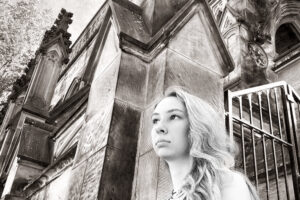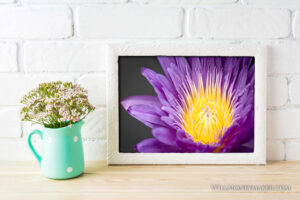It’s hard for an artist to give up any sort of control over their artwork. When it comes right down to it, photography is all about control. Every last little detail — you control the compositions, the lighting, the colors and all the camera settings that go into producing those things. In post-processing, you get to control even more aspects of the photograph, and when you print the images, then you have yet more options to choose from, like print sizes, papers, matting, and framing.
It’s very easy to get used to this sense of control and to start creating photographs that are tailor-made to be displayed under a precise set of conditions. We’ve probably all seen something like this happen before: Images that are maybe a bit dark because they’re designed to be displayed under extremely bright lights, or images printed on metallic papers that look better in certain lighting conditions.
But this is one aspect of photography that we just can’t control. If you’re interested in having galleries represent your work or if you plan to sell fine art prints, your images will someday end up adorning someone’s living room. And what kind of lighting will they have to display those prints? Who knows? In your own living room, you can design display lighting however you like, but that’s just not true for galleries or other people’s homes.
You may also be thinking that only fine art photographers have to worry about this since they’re the ones marketing toward galleries and so on. But that’s not true, either. All photographers may end up having their work displayed under circumstances they can’t control. Wedding photographers, portrait photographers, product photographers — if your prints could end up on display somewhere outside your home or office, then this is a concern you’ll need to take into consideration.
Ultimately, you really have no control at all over how your prints will be displayed. Sure, ideally, they’ll be perfectly illuminated so that everyone can see the subtle shifts in colors that you’ve created, or so that the contrasts between highlights and shadows really come alive. But you can’t count on that. At the end of the day, the choice of display and lighting is up to the people who feature or purchase your photographs.
So this is something to keep in mind when you’re creating photographs. It’s perhaps most important during the post-processing and printing phases because the minute adjustments to exposure that you’ll make and the papers that you choose are things that will be most evident beneath different types of display lighting. But it’s also something to think about when you’re out in the field taking photographs, too.
For display purposes, it’s all about striking the right balance. Don’t skew too hard toward taking dark images that really need bright lighting in order to see all the details, and keep in mind that subtle color shifts may be lost under less than ideal situations. To create photographs that people will want to put on display, always keep in mind that your finished prints should be versatile enough to hang in most living rooms.





